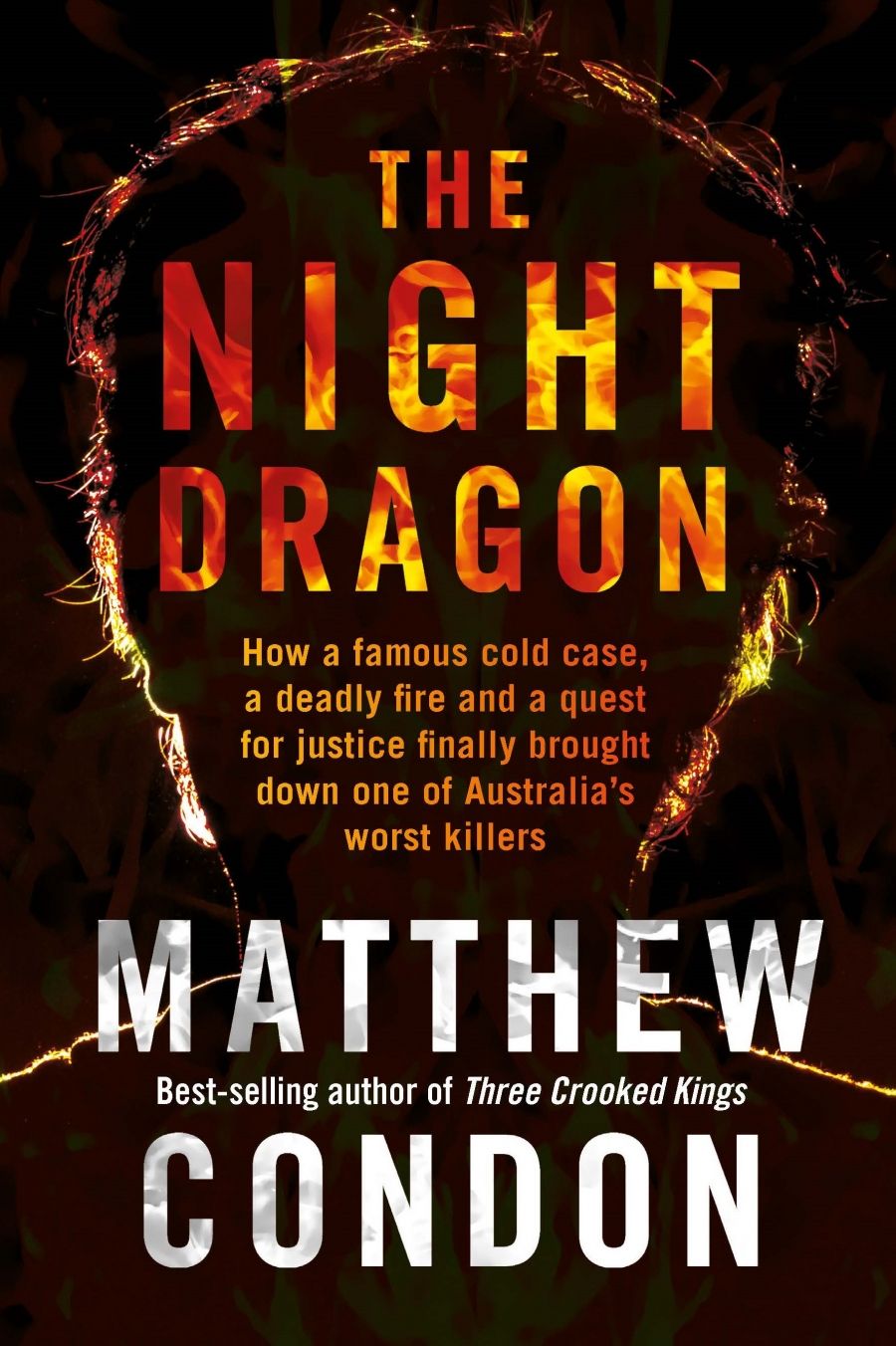
- Free Article: No
- Contents Category: Fiction
- Review Article: Yes
- Online Only: No
- Custom Highlight Text:
In 2013, Matthew Condon published Three Crooked Kings, the first in his true crime series delving into the murky, sordid, and often brutal world of police corruption in Queensland. That year, he wrote in Australian Book Review that, after finishing his trilogy, he planned to ‘swan dive into the infinitely more comfortable genre of fiction’ ...
- Book 1 Title: The Night Dragon
- Book 1 Biblio: University of Queensland Press, $32.95 pb, 295 pp, 9780702260209
As with its predecessors, The Night Dragon is impressive in its depth of research, rich with circumstantial details that deepen and solidify the writing. Condon again weaves snatches of interviews, official statements, and evocative description into a seedy tapestry of crime and misconduct. The Night Dragon diverges from Condon’s earlier works in its singular focus, however. Where the Three Crooked Kings trilogy sprawls, The Night Dragon burrows.
And what it burrows into is particularly harrowing. O’Dempsey – explosives expert, alpaca breeder, rapist, murderer – stalked Queensland for decades. While the book provides an abundance of detail about the man, O’Dempsey emerges as a deadly, intriguing, but finally unknowable presence haunting the state.
O’Dempsey is the eponymous ‘night dragon’, although his life is mainly explored to link the fire to the murders. His varied criminal activities are not the book’s true focus; Condon is more concerned with the implications of police involvement in the tragedy, its cruel intersection with the lives of three innocent people, and the circumstances that allowed O’Dempsey to remain free for decades. More than anything, it is the gaps that seem to obsess Condon, history’s failure to explain the events. And few events in Brisbane’s history raise as many questions as the destruction of the Whiskey Au Go Go.
Condon wisely avoids direct commentary about the night of the inferno; he presents it in a horrifying montage of eyewitness accounts, anchoring it in the testimony of survivors, for whom the night endures. Centring the depiction of the blaze around those who live with its memory is moving and effective, a reminder that many of the era’s most dangerous questions remain unanswered. Who organised the fire? How did O’Dempsey remain at large? Was Finch’s confession fabricated by corrupt police? If so, why?
Condon’s decision to begin and end the book with O’Dempsey’s recent court appearances reinforces the truth that the dark consequences of his actions persist into the present. When reading about O’Dempsey’s letter bomb, which disfigured an innocent woman, or about a birthday party the McCulkin girls attended the night of their disappearance, the reader is confronted by the enduring horror of these events. Condon’s compassion for the victims is a strength of the book. While The Night Dragon is planted in the true crime genre, its concern is neither the depravity of its subjects, nor the gritty details of the suffering they caused. Instead, Condon works to connect lines of cause and effect before they sink into the past, to shed light on the well-guarded secrets that linger today.
How much light can be shed is another question. There is a necessary haziness to the era: many police records were destroyed to hide illegal operations, and the criminals of whom Condon writes operate by a strict code of silence. At one point, O’Dempsey states that ‘a fish that doesn’t open its mouth can’t get caught’. He is clearly wrong, for he is now serving multiple life sentences, but the unfortunate result is that some of the more tantalising links the book suggests are not confirmed. Corrupt detective Roger Rogerson claims that a man named Vince tossed a Molotov cocktail down the Whiskey’s staircase, although this claim has been contradicted elsewhere. Other sources say the Whiskey plot was cooked up by Brisbane businessman John Hurrey. Condon emphasises Finch’s claim that his confession was fabricated by police, suggesting corrupt interests stymying investigation into the massacre. Hard evidence of police involvement in such a crime would be earth-shattering, but the extent – and reality – of this cover-up remains unclear.
It would be conjectural to do more than suggest these links. More than forty years after the massacre, a coronial inquest has been announced following O’Dempsey’s 2017 conviction for the McCulkin murders. This may be the year when the truth behind the Whiskey tragedy is at last laid bare.


Comments powered by CComment